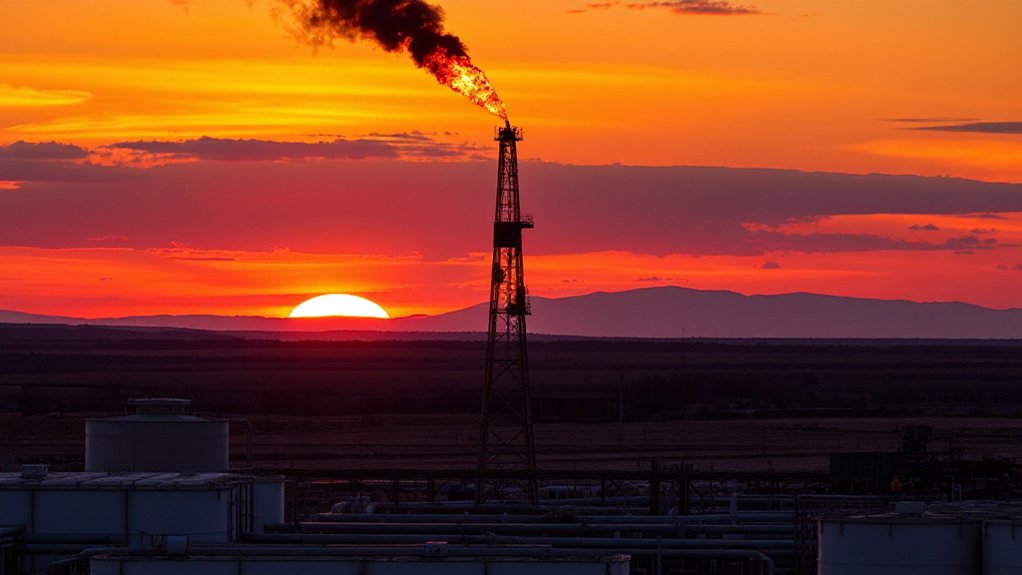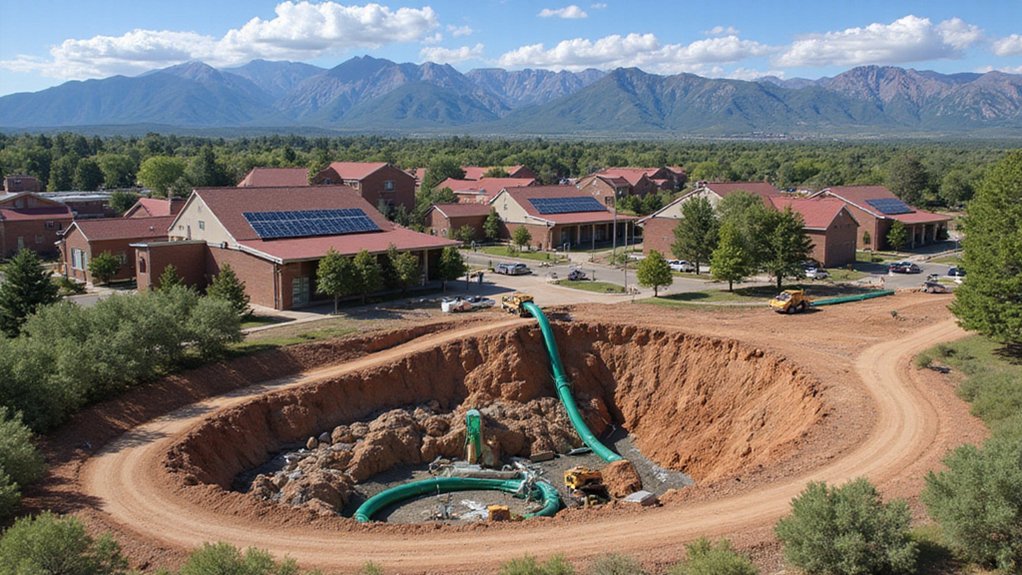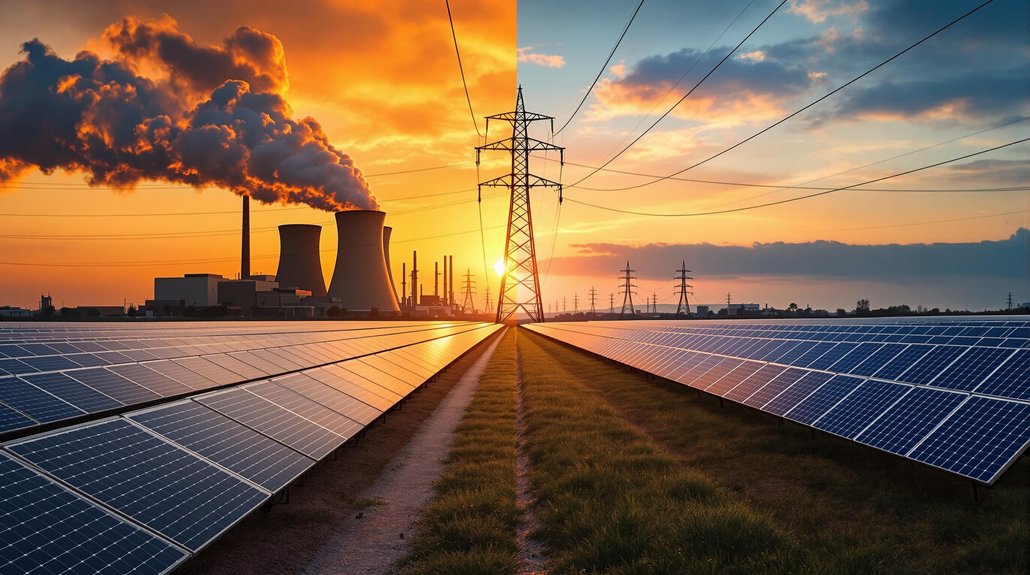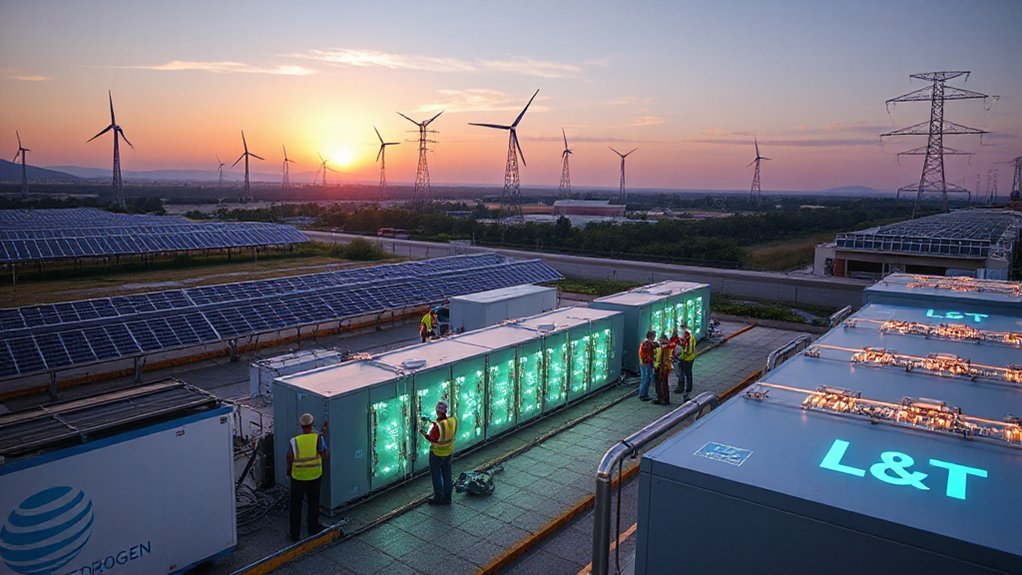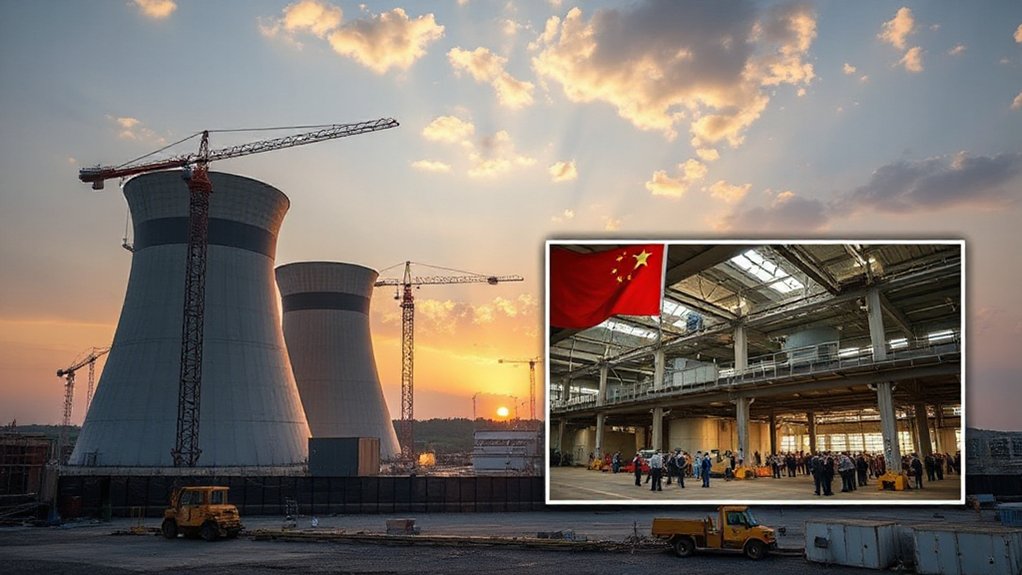While renewable energy grabs headlines, America’s natural gas titans continue to dominate the energy landscape with staggering numbers and global influence. ExxonMobil leads the pack with a market cap that has historically exceeded $400 billion and daily natural gas production of 3.9 billion cubic feet. That’s not a typo. Billions. Every day.
Giants of fossil fuel still rule our energy kingdom while renewables play catch-up
Chesapeake Energy isn’t exactly a small-time player either. They’re running over 45,000 wells across America with reserves of around 14.3 trillion cubic feet of gas equivalent. Trillion with a T.
Meanwhile, Chevron keeps expanding its LNG operations worldwide, apparently not content with merely continental dominance. The company maintains impressive worldwide gas reserves of 24.3 trillion cubic feet while ranking as the 16th largest public company in 2011. These gas giants are riding high on the shale gas revolution, which has transformed America into an energy powerhouse.
US exports are projected to jump by nearly 20% according to some estimates. Great for the economy, sure. Jobs, energy independence, all that patriotic stuff. But at what cost?
Let’s not kid ourselves. The environmental impact is massive. These companies pump out greenhouse gases like it’s going out of style – which it should be. Emissions from natural gas production continue to be a major environmental concern, despite all the glossy PR campaigns about “cleaner energy.”
Companies like Chevron talk a big game about decarbonization efforts and carbon capture technologies. ExxonMobil has made significant investments in carbon capture programs while continuing its fossil fuel expansion. How convenient that these strategies allow them to keep extracting fossil fuels while wearing a green hat.
The regulatory framework is tightening around them, but these corporations have deep pockets and deeper influence. The midstream players – Kinder Morgan and Energy Transfer – control the arteries of America’s gas infrastructure. Critical to the supply chain? Absolutely.
Committed to environmental stewardship? Well, that’s a more complicated question. As global demand for LNG surges, particularly in Asia, America’s gas giants are positioning themselves for decades more of fossil fuel dominance.
Renewable diversification is happening, sure, but at a pace that would make a glacier look speedy. The record production boom continues, and so does the environmental impact. Despite the fossil fuel industry facing increasing legal scrutiny over climate impacts, these companies show minimal emission reductions, highlighting our ongoing reliance on natural gas.
References
- https://www.oilandgasiq.com/drilling-and-development/articles/natural-gas-the-top-10-biggest-players-in-the-us
- https://straitsresearch.com/statistic/largest-oil-and-gas-companies
- https://energy-oil-gas.com/news/the-5-biggest-gas-companies-powering-the-global-energy-market-in-2025/
- https://www.youtube.com/watch?v=2hSxbg8Nifs
- https://www.visualcapitalist.com/sp/sc01-who-is-growing-u-s-natural-gas-leaders/
- https://www.morningstar.com/stocks/best-energy-stocks-buy-now
- https://companiesmarketcap.com/oil-gas/largest-oil-and-gas-companies-by-market-cap/
